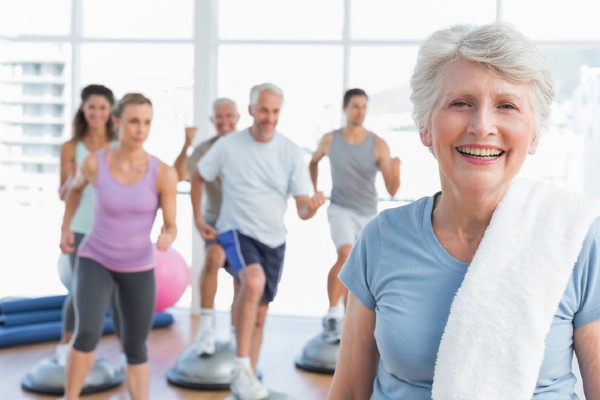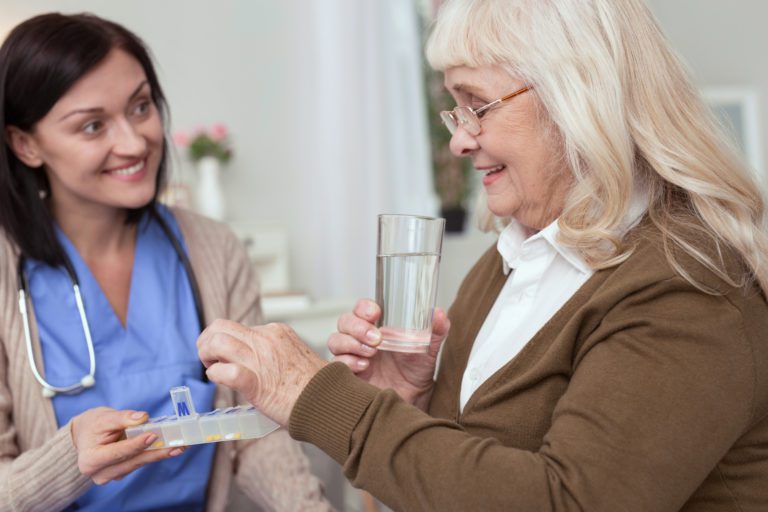Table of Contents
- How Aging Affects Exercise Habits
- Top Four Exercise Tips for Seniors
- What About Fall Risk?
- How Can Physical Therapy Help Seniors Maintain an Exercise Routine?
- Conclusion
As you transition into retirement, it can be tempting to relax and enjoy the free time. While rest is a well-earned part of retirement, staying active is essential for maintaining your health as you age. Regular exercise can help improve your overall well-being, but as we age, concerns like fall risks may arise. How can seniors stay active while minimizing these risks? In this article, we’ll explore the effects of aging on exercise habits, offer practical exercise tips for seniors, and discuss the role physical therapy can play in maintaining a healthy routine.
How Aging Affects Exercise Habits
As we grow older, our bodies undergo changes that can impact physical activity. These changes often require seniors to adjust their exercise routines to maintain safety and effectiveness. Here’s how aging affects exercise:
1. Decreased Muscle Mass
Aging naturally leads to the loss of muscle mass, resulting in reduced strength and endurance. Tasks such as lifting, pushing, or pulling become more challenging, making it crucial to incorporate strength-building exercises into your routine.
2. Reduced Flexibility
Loss of flexibility is another common effect of aging. Joints and muscles may become stiffer, limiting the range of motion and making bending, twisting, or stretching more difficult. Flexibility exercises are essential to maintain joint health.
3. Decreased Bone Density
Aging can also result in decreased bone density, increasing the risk of fractures during high-impact activities like running or jumping. Low-impact exercises like swimming or walking can help keep your bones strong without putting you at risk for injury.
4. Slower Recovery Time
As we age, recovery from physical activity tends to take longer. This means seniors should prioritize rest and recovery to avoid overexertion.
5. Reduced Cardiovascular Fitness
Cardiovascular fitness tends to decline with age, making aerobic activities like running or cycling more exhausting. Adjusting your routine to include low-intensity cardio exercises can help you stay active without straining your heart and lungs.
Learn More: Key Facts about breast cancer – Common causes of breast cancer
Top Four Exercise Tips for Seniors
Staying active is crucial for healthy aging, but it’s important to tailor your routine to your unique physical needs. Here are four essential exercise tips to help you get started:
1. Start Slowly
If you’re new to exercise or haven’t been active in a while, it’s important to ease into your routine. Begin with low-impact exercises such as walking, cycling, or swimming for 10-15 minutes daily. Gradually increase your activity by 5-10 minutes each week. Always wear comfortable footwear with nonslip soles and clothing that allows for unrestricted movement.
2. Mix It Up
Variety is key to maintaining an active lifestyle. Incorporate different types of exercise, including strength training, balance exercises, and stretching. Strength training could involve light weights, resistance bands, or bodyweight exercises like push-ups. Balance exercises, such as standing on one foot, can improve coordination and prevent falls.
3. Focus on Flexibility
Flexibility exercises are vital for seniors. Focus on stretching key areas such as the hips, back, and legs to reduce stiffness and improve mobility. This can help make everyday tasks, such as bending or reaching, easier.
4. Stay Hydrated
Proper hydration is essential for overall health and can prevent dehydration-related dizziness or falls. Drink plenty of water before, during, and after exercise to stay hydrated and reduce the risk of injury.
What About Fall Risk?
Fall risk is a common concern for seniors and can discourage many from staying active. However, avoiding exercise due to fear of falling can have negative consequences, such as decreased muscle strength, reduced flexibility, and diminished cardiovascular health—all of which can increase your fall risk further.
Strategies to Reduce Fall Risk During Exercise
To ensure you can exercise safely, consider the following precautions:
- Start slowly and gradually increase the intensity of your workouts.
- Choose exercises that align with your physical abilities.
- Always warm up before exercising and cool down afterward.
- Wear proper footwear with good support.
- Exercise in a safe environment with adequate lighting and clear pathways.
- Ensure your medications are not affecting your balance or coordination.
- Work with a physical therapist or personal trainer to create a safe exercise plan.
How Can Physical Therapy Help Seniors Maintain an Exercise Routine?
Physical therapy can be an excellent resource for seniors looking to maintain an active lifestyle while minimizing the risk of injury. A physical therapist can assess your movement patterns, identify areas of weakness, and design a personalized exercise plan that addresses your unique needs and fall risk. They can also provide guidance on how to improve balance, strength, and flexibility, making it easier for you to stay active as you age.
Whether you’re just beginning your fitness journey or looking for ways to stay active, working with a physical therapist can help ensure your routine is both safe and effective.
Learn More: What to Know About Anxiety in Older Adults
Conclusion
Staying active in retirement is essential for maintaining physical health and reducing fall risk. As you age, adjusting your exercise routine to accommodate changes in strength, flexibility, and cardiovascular fitness can help you stay safe while enjoying the benefits of regular physical activity. By following these tips and considering physical therapy as part of your routine, you can build a healthy, active lifestyle that supports your well-being.
At From The Heart Home Care, we are dedicated to helping seniors maintain their independence and vitality. Whether or not our services fit your needs, we hope this guide inspires you to stay active and embrace the benefits of exercise in your golden years.
4o







